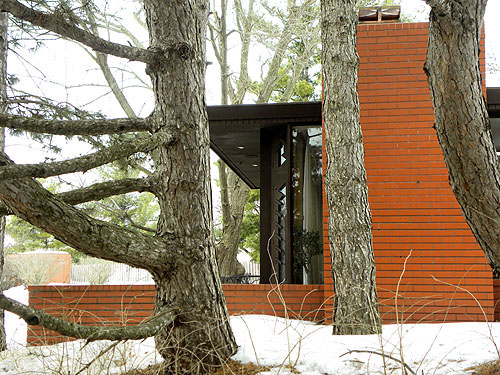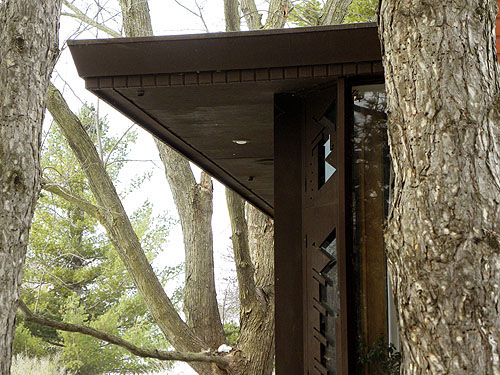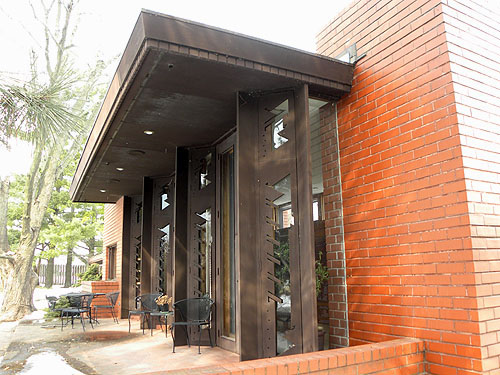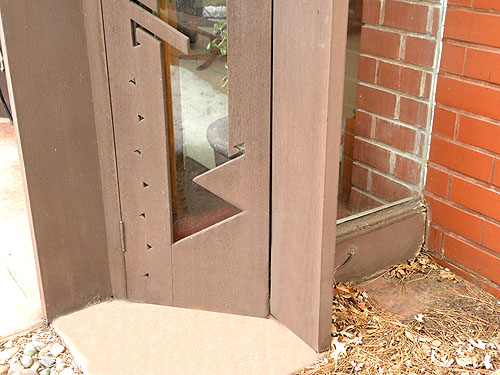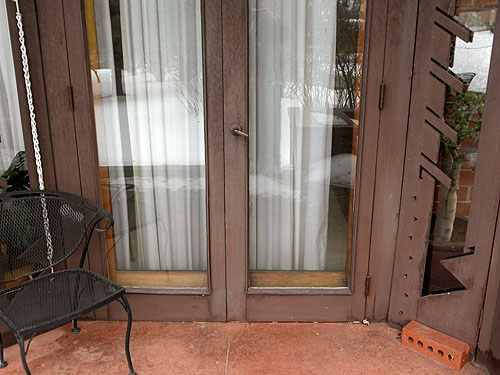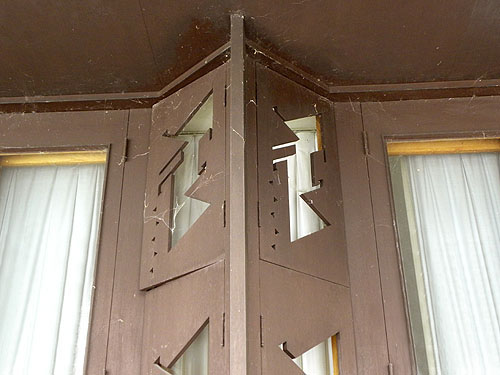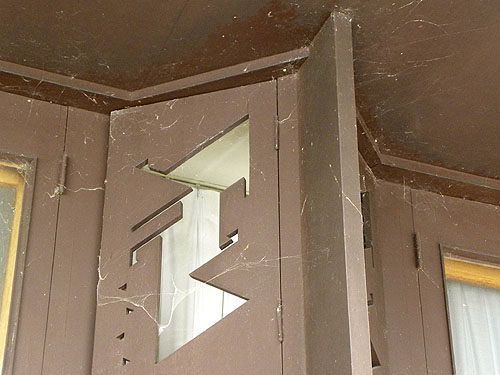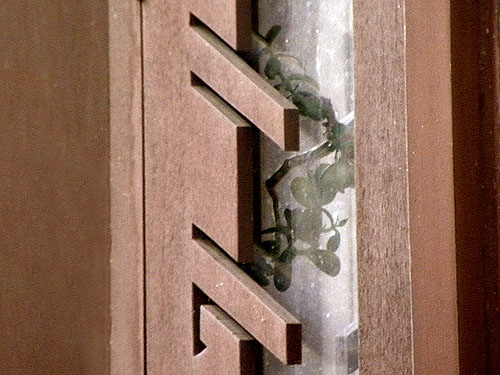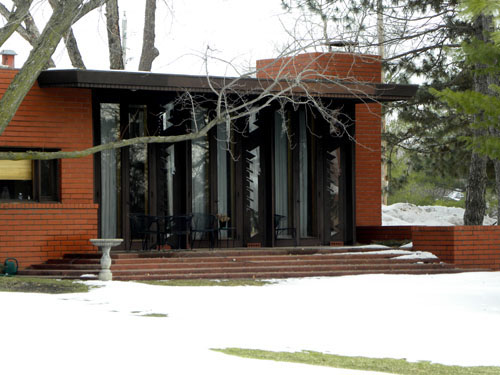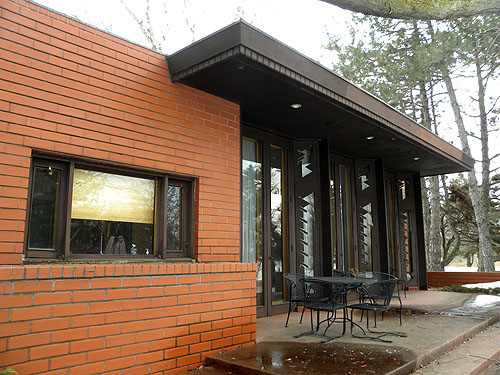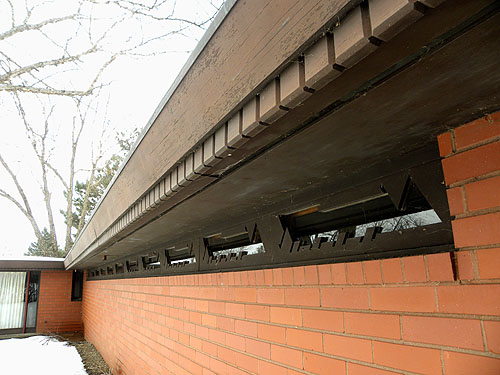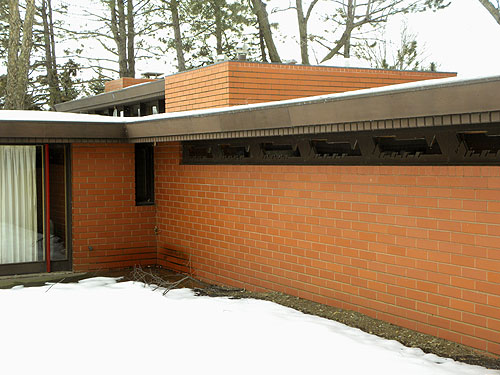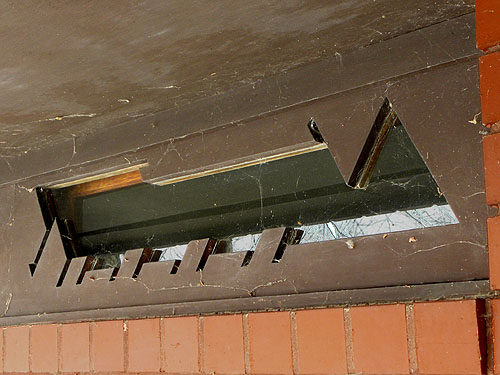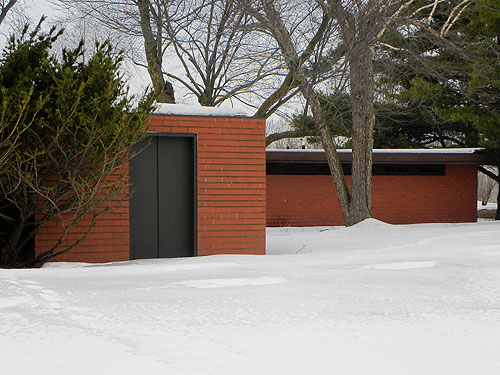[flw/_Private/Navbar Be-mail.htm]
Paul and Ida Trier Residence, Johnston, Iowa (1956) (S.398)
Light Screens
Wright's initial drawing of the home shows that he conceived this home as a Usoniam Automatic, constructed of 12 x 24" concrete blocks. The Triers visited Taliesin to review the working drawings of the home. "Paul watched Wright draw the design of the perforated panels. He wasn't happy with the first design, so Wright designed a second. All panels were unique to each house," she explained. Ida pointed toward the Living Room wall of doors and perforated light screen window pilasters. "The perforated triangles were originally designed as squares, but we couldn't afford squares." Not only do the three sets of double floor to ceiling doors in the Living Room's Southern wall open outward, but the decorative light screen window pilasters do as well, blending interior with exterior. The top portion of the pilaster window panels open independently, allowing ventilation into the Living Room. Perforated light screens, which run along the north side of the bedroom wing, provide privacy and allow natural light into the Gallery.
Perforated light screens, which run along the north side of the bedroom wing, provide privacy and allow natural light into the Gallery.
Top Bottom
The Living Room's Southern wall of doors and decorative light screen window pilasters open outward, blending interior with exterior. The top portion of the pilaster window panels open independently, allowing ventilation into the Living Room.
1: Viewed from the East. The low wall on the left allows for Terrace level planting, includes a built-in planter and encloses the Terrace. The Living Room looks out to the back yard.
2: Detail of the cantilevered roof and perforated light screen window pilasters.
3: The Living Room's Southern wall of floor to ceiling doors and decorative light screen window pilasters open outward, blending interior with exterior. 4: Not only do the three sets of double floor to ceiling doors open outward but the perforated light screen pilaster windows do as well. 5: Floor to ceiling perforated light screen pilaster windows open outward. Glass intersects and is imbedded into the brick-tile wall.
6: Viewed from the South. The Living Room floor to ceiling doors and unique perforated light screen pilaster window panels open outward, blending interior with exterior. 7: The top portion of the pilaster window panels open independently, allowing ventilation into the Living Room. 8: Detail of the pilaster construction. 9: Detail of the perforated light screen windows construction. 10: The Workspace is on the left, one of the home's three built-in Planters is at window height. The Living Room is in the center, Planter on the right.
11: Viewed from the West. The Workspace and window Planter is on the left, the Living Room is on the right. The roof cantilevers out over the Living Room's Terrace.
1: Perforated light screens, which run along the north side of the bedroom wing, provide privacy and allow natural light into the Gallery. 2: Viewed from the West. Originally designed as a Carport, the enclosed playroom is on the left. The small vertical window left of center allows light into the Bathroom. Perforated light screen windows, which run along the north side of the west wing, provide privacy and allow natural light into the Gallery. 3: Viewed from the Northwest. The Living Room's clerestory windows can be seen above the playroom and Bath on the left. The height of the Utility Room and Workspace can be seen in the center above the roof line. The perforated light screen windows, allows natural light into the Gallery on the right. 4: Detail of the perforated light screen, which allows natural light into the Gallery. 5: Viewed from the Northeast, the Shop is on the left, the Gallery is seen on the right.
Text and Illustrations by Douglas M. Steiner, Copyright 2010 BACK


